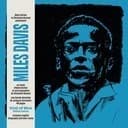Formula, Intervals, and Symmetrical Structure
The B♯ whole-half-diminished scale follows a precise interval formula of W-H-W-H-W-H-W-H, creating an eight-note octatonic structure with complete symmetry. This symmetrical pattern repeats every minor third, meaning that only three unique whole-half-diminished scales exist in Western music. The B♯ whole-half-diminished scale shares its exact pitch collection with D♯, F♯, and A♯ whole-half-diminished scales at minor third intervals.
From the root B♯, the scale contains the root (1), major second (2), minor third (♭3), perfect fourth (4), diminished fifth (♭5), minor sixth (♭6), major sixth (6), and major seventh (7). When applied over a B♯ dominant seventh chord, this scale provides access to altered tensions ♭9, ♯9, ♯11, and 13, making it ideal for creating sophisticated dominant chord voicings and improvisational lines in jazz contexts.
Application in Jazz Improvisation Over Dominant 7th Chords
The B♯ whole-half-diminished scale serves as a primary improvisational tool for jazz pianists navigating B♯ dominant 7th chords with altered tensions. Jazz musicians typically employ this scale over B♯ dominant 7th chords functioning as V chords in minor keys, dominant 7♯9 chords, dominant 7♭9 chords, and dominant chords with ♯11 or ♭13 alterations, creating the sophisticated harmonic language heard in bebop and modern jazz.
In practical application, jazz improvisers often alternate between the B♯ whole-half-diminished scale and more consonant dominant scales like B♯ Mixolydian, using the diminished scale to create moments of heightened tension before resolving to more stable harmonic territory.
Practice Techniques and Fingering Strategies
Effective piano practice of the B♯ whole-half-diminished scale requires systematic fingering patterns that accommodate the scale's unusual interval structure. Begin by practicing the scale over a sustained B♯ dominant 7th chord, listening carefully to how each scale degree creates tension and resolution against the underlying harmony. Practice emphasizing chord tones versus alterations to develop sensitivity to the scale's complex harmonic colors.
Work through the scale in various rhythmic groupings and practice connecting it to resolution tones in the target key. Advanced practice involves exploring the scale's symmetrical properties by practicing melodic patterns that transpose at minor third intervals, building comprehensive improvisational vocabulary.
Relationships to Other Scales and Harmonic Context
The B♯ whole-half-diminished scale shares a profound relationship with the B♯ half-whole-diminished scale, which reverses the interval pattern. While both scales are octatonic and symmetrical, the whole-half-diminished works over dominant 7th chords while the half-whole-diminished functions over fully diminished 7th chords.
The B♯ whole-half-diminished scale relates to dominant scale alternatives including B♯ Mixolydian and B♯ bebop dominant, each offering different levels of tension and harmonic complexity. Jazz musicians develop fluency across all dominant scale options to respond dynamically to the evolving harmonic landscape of jazz compositions.





